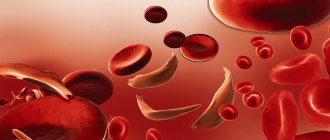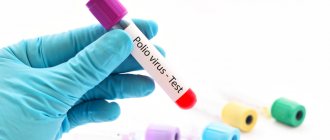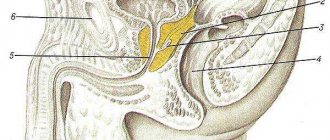Peculiarities
Periodontal disease develops gradually. It causes circulatory problems. The mucous membrane in the oral cavity becomes thinner. The gums expose the roots of the teeth. This condition can cause teeth to become loose. The likelihood of malocclusion increases. The patient may experience bad breath.
Depending on the characteristics, periodontal disease can be:
- Localized. The disease spreads only to specific areas of the dentition. In this case, the affected area is limited.
- Generalized. With this form, the entire row of teeth can be affected.
Depending on the nature of the disease, it can be acute or chronic.
Patient prognosis
As a rule, osteoporosis develops secretly and over a long period of time. But with timely treatment, it is possible to relieve the patient from pain in the spine and bones within several months, reduce the risk of new fractures and reduce muscle weakness. In some cases, when the underlying endocrine disease that led to the development of osteoporosis is overcome, bone disease also goes away.
At the same time, modern medicine cannot yet offer specific remedies for periodontal disease. The endocrinologist will recommend that the patient regularly visit the dentist, who will help maintain normal bite and teeth closure.
“It is no longer possible to return gum that has “gone away” due to periodontal disease,” notes dentist Igor Repin. “Efforts need to be directed toward reducing the rate of progression of the disease. And how intensively periodontal disease will progress depends only on the effectiveness of the treatment selected by the endocrinologist.”
If the alignment of the teeth changes, bite correction may be required. The doctor will polish some areas of the teeth, which will reduce the patient’s discomfort. If you let the disease take its course, the loss of the attractiveness of your smile will be only a small part in a series of dangerous consequences for the body. Osteoporosis is a terrible cause of disability due to the destruction of spinal bones and spontaneous fractures. Strict adherence to the recommendations of the endocrinologist will help prevent this.
Main symptoms
Periodontal disease is a very rare disease. It mainly affects older people. Unlike caries, periodontal disease is much less common. Often people do not even notice the manifestations of the disease. The dentist can detect the onset of periodontal disease during an examination.
Symptoms of periodontal disease are similar to other dental diseases:
- The gums begin to bleed and swell.
- A putrid odor appears from the mouth.
- There is an unpleasant taste of blood in the mouth.
- The patient reacts sharply to sour and cold things.
- Gums react painfully to mechanical influences.
- Pus may be released.
- Teeth become mobile.
If such symptoms appear, you should contact the dentist. Only a doctor can make a correct diagnosis. Often patients, unaware of terrible diseases, visit the dental office only for professional hygiene. After a thorough cleaning, the dentist discovers the problem.
Pay attention to the first signals
Copious dental deposits on the lingual surface
Usually, many dental pathologies are identified by the doctor. However, some symptoms can be detected on your own, which should be a reason to contact the clinic.
Such manifestations include:
- abundant tartar;
- permanent white plaque on the gums;
- unpleasant sensations from eating thinning food;
- obsessive pulsation in the periodontium;
- subsidence of the gums and exposure of the necks of the crowns
- bleeding gums due to mechanical impact on them;
- discharge of purulent exudate from periodontal pockets;
- wedge-shaped enamel defects.
The main symptoms of the initial stage of periodontal disease are the atypical exposure of the necks of the crowns and the presence of tartar. Subsequently, solid deposits are removed, and tissue lysis continues.
Development of the disease
Periodontal disease in humans develops in stages:
- First stage. There are no obvious symptoms of the disease. But the inflammation has already begun.
- First stage. The gums may recede, but only slightly. Changes in bone tissue can be seen on an x-ray. Some patients experience increased tooth sensitivity in the first stage.
- At the second stage, the gums expose the necks of the teeth. Interdental gaps may form. The picture already clearly shows changes in the alveolar process. Increased tooth sensitivity.
- At the third stage, the gums expose the tooth root by more than half. The interdental spaces are greatly enlarged. There is severe tooth mobility.
- At the fourth stage, the roots are held in place only by the upper part. The patient reacts painfully to sour and cold foods. Mobility of teeth greatly interferes with conversation and eating.
What it is?
The teeth of the upper jaw are secured thanks to a special part of it - the alveolar process. Periodontal disease manifests itself as atrophy of the dental cells of this process, and the disease is progressive. Due to atrophy, the interdental septa uniformly decrease in height, but the cortical plates (the surface of the alveolar processes) are preserved.
X-rays with periodontal disease show sclerotic changes in bone tissue, that is, the bone pattern becomes fine-meshed. Foci of osteoporosis are also revealed, and bone tissue decreases at the interdental septa.
The nature of periodontal disease is generalized - this means that all teeth suffer from the disease at once.
Periodontal disease: photo
Causes of periodontal disease development
It is impossible to say with one hundred percent certainty why the disease occurs. Typically, periodontal disease begins to develop due to metabolic disorders.
Simultaneously with periodontal disease, a person may have other, no less serious pathologies:
- Hormonal disorders.
- Problems with the gastrointestinal tract.
- Deficiency of minerals and vitamins in the body.
- Alcohol abuse, smoking.
- Neurological diseases.
- Incorrect occlusion.
- Diseases of internal organs and systems.
- Damage to gums due to trauma.
- Reduced immunity.
- Improper oral care.
Plaque-forming bacteria do not cause periodontal disease. But they can worsen the disease. Serious diseases such as HIV and cancer primarily affect the development of periodontal disease. Bad habits also contribute to the development of the disease. Long-term use of medications can aggravate the problem.
Will traditional medicine help?
On the Internet, on many sites, you can find recipes for the treatment of periodontal disease with folk remedies. However, let’s say right away that traditional treatment of periodontal disease may turn out to be completely useless, since it is only possible to stop the development of the disease by using professional techniques. Moreover, the use of some recipes can be harmful, provoking the active development of inflammatory processes.
If you still want to try folk remedies or homeopathy to speed up the pace of periodontal disease treatment, be sure to coordinate all your actions with your doctor.
Calculate the cost of treatment by taking a short test in 20 seconds!
Do not delay your treatment, because in this matter time plays against us.
Gums expose teeth: treatment and prevention
Only a dentist can prescribe the necessary treatment. In addition to the dental therapist, consultation with hygienists and periodontists may be required. Subspecialists provide comprehensive treatment in their field. If necessary, the patient is sent to take an x-ray. This will help determine the degree of destruction of the dental unit. Only after the diagnosis is confirmed, a treatment plan is developed. Treatment of periodontal disease will not be effective without first removing soft and hard deposits. The procedure is performed by a hygienist or periodontist. When gums expose teeth, treatment and prevention methods should be selected by a professional dentist.
Where to contact?
If you notice signs of periodontal disease, contact the Good Hands dental clinic. Our specialists will conduct diagnostics and make the correct diagnosis, according to which they will carry out treatment. We employ experienced dentists who use innovative technologies in their work to achieve good results. Our clinic is equipped with the latest technology; doctors have high-quality medications and anesthetics at their disposal, which allow treatment to be carried out painlessly and safely. You can schedule a free consultation with us and find out all the necessary information right now by filling out an application on our website or calling us at +7 (495) 132-33-73.
Prevention and treatment of periodontal disease
Drug treatment can only be carried out by a doctor. Usually the doctor prescribes medications to the patient:
- Vitamins.
- Relieving inflammation.
- Hormonal agents.
- In some cases, immunostimulants are prescribed.
If necessary, the patient is given an injection into the gums to relieve inflammation. A special preparation saturates soft tissues with oxygen. If acute periodontal disease is diagnosed, the doctor may prescribe a strong antibiotic. During therapy, it is very important to choose the right remedy. If one drug does not work, the doctor prescribes another drug. Cholisal gel is often prescribed for local treatment. Methods of prevention and treatment of teeth should be selected by the dentist.
Physiotherapy
To strengthen and restore soft tissues, procedures are often performed:
- Laser. Laser treatment quickly eliminates inflammation. The technique allows you to quickly restore periodontal tissue. The laser effectively relieves swelling and fights infection.
- Electrophoresis. The active substance is calcium gluconate. Thanks to the technique, dentists quickly eliminate hyperesthesia of dental units.
- Darsonvalization. This therapy significantly reduces tooth sensitivity. Darsonvalization should be carried out after professional teeth cleaning to remove plaque.
- Ionized air. The therapy is based on breathing, with the help of which the capillaries expand. Typically the course consists of twenty procedures. Each one takes ten minutes to complete.
- Vacuum. Vacuum is applied to diseased capillaries. This improves tissue nutrition. A vacuum can stop atrophic processes.
Treatment of periodontal disease cannot begin without sanitation. An important stage is the elimination of caries. Rotten units must be removed. Affected units contain a huge number of pathogenic microorganisms. If the affected teeth are not removed in a timely manner, the gums will be constantly inflamed. In this case, treatment of periodontal disease does not make sense.
Possible consequences of periodontal dystrophy
There are many dangers of periodontal disease. These include banal discomfort, and not rarely serious dental diseases.
The most common consequences are:
- psychological trauma due to the appearance of the oral cavity;
- difficulty in future prosthetics;
- abscess formation of periodontal tissues;
- damage to the dental pulp;
- formation of periodontitis and periostitis of the jaw;
- possible purulent-necrotic damage to bone tissue;
- intoxication of the whole body with a generalized course;
- spread of infection to neighboring areas of the oral cavity;
- provoking inflammation in the joints, kidneys and intestines.
Treatment depends entirely on the stage of periodontal disease. Usually it consists of eliminating the cause and symptomatic effects. If the destruction is not stopped in time, a period comes when there is complete loss of teeth or the need to remove them according to indications.
However, this does not solve the problem. The sockets of the extracted teeth are gradually regenerated, but degenerative changes in the bone tissue remain. All this leads to severe changes in the temporomandibular joint, provoking the formation of arthrosis and arthritis.
Splinting and surgery
The mobility of the dentition provokes the process of destruction of bone tissue. As a result, the teeth begin to move even more in the sockets. Under the influence of chewing load, the dental units diverge in different directions. If such symptoms occur, dentists recommend splinting to patients. The mobility of teeth will be stopped. And bone tissue will stop deteriorating. Surgery is usually performed for moderate to severe periodontal disease.
In such situations, gels and other local remedies are ineffective. Only a dental surgeon can help the patient. Through surgery, gums and bone tissue are restored. Special materials are implanted under the patient’s gums. After a certain time, the materials take root and lead to bone restoration.
Home treatment
The dentist may prescribe medications that can be used at home.
Special products in the form of gels and ointments stimulate metabolism:
- Heparin ointment. Leads to blood thinning. The ointment is used in a course for two weeks.
- Elugel. Due to the content of chlorhexidine, the product has an effect.
- Solcoseryl. Dentists recommend two methods of application. You can rub the drug into the gums several times a day or make applications with it.
- Holisal. The drug should be rubbed into soft tissues twice a day. The duration of treatment is determined by the doctor.
Please note: traditional medicine is not able to completely get rid of the disease.
But they can speed up the healing process:
- Garlic infusion for rinsing.
- Salt solution. You can take 1 tsp. sea salt and dilute it in a glass of warm water.
- Calendula infusion. Suitable for repeated use throughout the day.
- A solution of water and Kalanchoe juice.
- Use of propolis.
Propolis has unique properties. For treatment, you can use a pharmacy infusion. In its pure form, it can be used internally after consultation with a doctor. The product is suitable for compresses. They need to be applied to the sore spot. Massage is very useful in the treatment and prevention of dental diseases. It must be done from the inside and outside. The patient should consult with his or her physician before using traditional medicine. Medicines can only be taken as recommended by your dentist.
Pharmacy products
It is not always necessary to use strong drugs to treat periodontal disease. At the initial stage of its development, you can get by with more loyal means.
Ointments, gels and sprays
Consider the list of popular ointments:
- “Heparin ointment” has a strong anti-inflammatory effect against periodontal disease.
- "Cholisal" is a universal ointment designed to relieve pain. Suitable for absolutely all patients, including children and pregnant women, has no contraindications or side effects.
- "Troxevasin" is a cooling gel that helps reduce swelling during periodontal disease.
- "Elgifluor" is a medicinal product that is a liquid consistency. Doctors say that this is one of the most powerful drugs with an antiseptic effect.
- Mouthwash "Splat" is an excellent preventive remedy that promotes blood circulation in the gums.
Heparin ointment
Holisal
Splat rinse aid
Troxevasin gel
Homeopathy
Basically, homeopathic remedies are selected by the dentist strictly individually for each patient.
But, there are three harmless drugs that you can buy yourself without a prescription:
- "Iodium 6". It is used only for acute lesions of periodontal disease in the lower part of the jaw. The recommended dosage is 5 drops twice a day.
- "Acidum nitricum 6." Indications for the use of this drug: unpleasant odor from the mouth, increased salivation, bleeding or looseness of the skin. The recommended dosage is 7 grains up to three doses per day.
- "Phosphorus 6". It is prescribed only for severely affected upper jaw by periodontal disease. The recommended dosage is 5 drops twice a day.
Acidum Nitricum
Phosphorus 6
Iodium 6
Homeopathic remedies should be taken as an additional drug to general therapy.
Periodontal disease in children
Although periodontal disease occurs more often in older people, it also occurs in children.
Causes of the development of the disease in children:
- Disruption of the cardiovascular system.
- Weakened immunity.
- Allergy.
- Diabetes.
- Hormonal imbalances.
- Vitamin deficiency in the body.
- Heredity.
Signs of the disease in children are not always obvious. It is especially difficult to recognize the disease at an early stage of its development. If your child complains of tooth sensitivity, you should pay attention to this. Bad breath can also indicate a medical condition. If you notice such symptoms, you should immediately contact your pediatric dentist. Treatment of pathology in children is complex. Therapy includes medications, physiotherapeutic procedures, and a special diet. Surgery is performed only when indicated. For prevention, you should use a suitable toothbrush and carefully monitor your oral hygiene. Prevention and treatment of teeth in children must be performed.
ICD-10
According to the generally accepted international classification of diseases ICD-10, periodontal disease belongs to class XI (diseases of the digestive organs) and is designated K05.4 (K05 - gingivitis and periodontal diseases). As an explanation for this disease, the ICD-10 reference book indicates “juvenile periodontal disease.” This phenomenon is also called juvenile periodontal disease, as it occurs in children under 5-6 years of age and young people aged 12-18 years. More often, people in adulthood are exposed to this disease.
A neighbor of periodontal disease according to the ICD-10 classification is periodontitis (chronic - K05.3 and acute - K05.2). Although many people confuse periodontitis and periodontal disease , the differences between these diseases are quite significant.
Prevention
Methods for the prevention and treatment of dental periodontal disease are varied. It is very important to remember about prevention. Because it is easier to prevent a disease than to treat it later.
What preventative measures do dentists recommend:
- Be attentive to your health. Eliminate diseases of internal organs in a timely manner.
- Don't forget about physical activity. This will strengthen the immune system.
- You need to brush your teeth properly and regularly. Regular brushing of teeth is the key to oral health.
- Visit your dentist twice a year.
- Do not refuse professional oral hygiene procedures. Ideally, it should be done once every six months.
- Choose the right hygiene products: brushes, pastes, rinses. Use dental floss.
- Treat caries promptly.
For dental prevention and treatment, you should only contact a competent, qualified doctor. Periodontal disease can be cured. Prevention and treatment of dental periodontal disease is a very important task. The main thing is to start treatment as early as possible.
Taking "Lincomycin"
For the treatment of periodontal disease, Lincomycin, a drug with a wide spectrum of action, is increasingly used.
It is also prescribed for inflammatory and infectious diseases of bones, joints, skin, etc. It has a pronounced antimicrobial effect and has proven itself excellent in the treatment of periodontal disease. Taking the drug usually lasts two weeks, and in particularly severe cases it can last longer.
You should not take it without a doctor’s prescription, since illiterate use can not only cause dysbacteriosis, but also contribute to severe damage to the kidneys or liver. It is the dentist who can prescribe a safe dose that will be effective.
Therapeutic toothpastes and anti-inflammatory gels
What other drugs can help with periodontal disease?
There are special gels on sale that are applied to the gums. These include “Holisal”, “Kamistad”, “Metrogil Denta”, “Acepta”. Thanks to this form, the drug adheres well to the wet surface of the gums and penetrates into the tissue to the maximum. Gels have a pronounced antiseptic effect, help relieve swelling, and also eliminate pain and inflammation of the gums. For periodontal disease, it is recommended to use special therapeutic and prophylactic toothpastes for cleaning teeth. Lacalut, Parodontax, and “Forest Balsam are considered the most effective .
These pastes consist of active antiseptics and herbal extracts that perfectly relieve inflammation. Of course, even the most effective toothpastes cannot be used for complete treatment, so they should be used in combination with medications.
Mumiyo for the treatment of periodontal disease
It is recommended to use mumiyo for the treatment of periodontal disease only in combination with medications. As experts have established, it is quite effective in the treatment of periodontal disease, gingivitis, stomatitis and other diseases of the oral cavity.
For periodontal disease, mumiyo is used as a rinse . To do this, dissolve 2 grams of this product in half a glass of boiled water. The mouth should be rinsed morning and evening.
Mumiyo is also used to make compresses for the gums . To prepare such a remedy, 5 grams of mumiyo are diluted in half a glass of boiled water, a gauze or cotton swab is soaked in this solution and applied to the gums. You should hold it for about 20 minutes, then spit it out.











